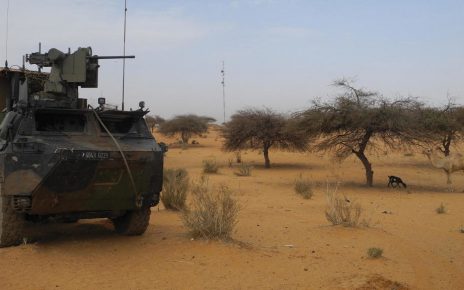Now is as good a time as ever to give your abdominals a tighter, leaner look. However, if you start an abdominal-intensive routine, you may find that all regions will not shape up at the same rate. This is because the lateral side of the abdomen is usually one of those trying areas that take more effort to shape than the front of the abdominal wall. It can be discouraging to find that no matter how much time you spend in abdominal work and cardio, the area on the sides of your waist above each hip remains soft and kind of flabby. Too often, these “love handles” are anything but tight, especially if you were once heavier and have now lost weight. Or, maybe your lateral abdomen is flabby because you’re just starting your fitness journey.
Cardio and a clean diet are certainly critical components of your overall abdominal program. Exercise is equally important for your success, but sit-ups and crunches are sometimes not direct enough to fully activate the three flat muscles of the side abdominal musculature. There are good direct exercises, including some very good machines that specialize in activation of the lateral abdomen when you’re in the gym. However, if the pandemic or life’s obligations are cutting into your training time, consider side-bridges for rescuing your lateral abdomen.
This is a very simple exercise you can perform just as easily at home, in a dorm room or in a hotel room if you’re traveling. EMG studies show that side-bridges strongly activate the oblique muscles on the side of the waist. Side-bridges activate a number of muscles that help stabilize the spine and this additional strength will help reduce the risk of injury.
Muscles You’ll Activate
Three flat muscles line the lateral side of the abdomen and trunk. The external oblique is the largest and most superficial of the lateral abdominal muscles. It’s anchored from the fifth through the 12th ribs by small bundles of muscle fibers. These bundles are intermingled with the serratus anterior muscle and the latissimus dorsi muscle. If your body fat is low enough, these digitations (particularly external oblique and serratus muscles) will be viewed easily along your side. The muscle fibers of the external oblique run from lateral to medial and superior to inferior, in the same direction that your fingers would point, if you were to put your hands in your pockets. As the external oblique extends toward the center of your abdomen, it unites to form a flat fan-shaped muscle. This muscle inserts into the pubic and iliac bones of the pelvis and hip, respectively. When both left and right sides of the external oblique muscles work together, they flex the trunk and move your head toward your feet. If only one side contracts, the trunk will flex forward and rotate toward the opposite side. Alternatively, if the right side contracts, you can bend laterally toward the left side. For example, if you are lying with your right side closest to the floor in side-bridges, the left external oblique will act to flex the torso laterally (bend it from the starting position to the straight body position).
Another important oblique muscle lies just deep to the external oblique. It’s the internal oblique. This is the middle layer of the three flat abdominal muscles and is therefore not visible. It begins from a thick connective tissue sheath located in the lower back, called the thoracolumbar fascia, and also from the iliac bone of the hip. Its fibers run at right angles to the external oblique muscle, fanning out from their origins and running toward your head (superiorly). They run approximately in the direction your thumb would lay if you placed four fingers in the front pockets of your jeans, but left the thumb outside the pocket. The internal oblique inserts into the lowest three or four ribs, where they become continuous with the internal intercostal muscles (respiratory muscles of the rib cage). In contrast to the function of the external oblique, the internal oblique will twist the body toward the right if only the right side contracts, and toward the left if only the left side of this muscle contracts. However, similar to the external oblique muscle, the internal oblique will flex the trunk at the waist and move your head toward your feet, if both left and right portions of the internal oblique contract together. However, working along with the external oblique muscle in side-bridges, one side of the internal oblique will flex the torso laterally.
The transversus abdominis muscle is the deepest of the anterior abdominal muscles. It originates from the interior surfaces of the inferior five to six costal cartilages of the ribs. The fibers of the transversus abdominis interdigitate with the fibers of the diaphragm. Some of the fibers also take origin from the thoracolumbar fascia on the posterior side of the vertebral column, and also from the iliac crest region of the hip. The fibers of the transverse abdominis run parallel to the floor when standing upright. Some of the most inferior (lowest) fibers in this muscle deviate to run parallel to the fibers of the internal oblique muscle. The fibers terminate in the rectus sheath that encases the rectus abdominis muscle. The transverses abdominis muscle helps to compress the other abdominal muscles (particularly during heavy lifting) and it helps support, and prevent bulging of, the abdomen. It tightens the abdomen in side-bridges as the body is lifted into place. Improving strength of the transversus abdominis will result in a smaller waistline and it will tighten the lateral abdomen.
Side-Bridges
1. Lie on your left side. Flex your left elbow and place the left forearm on the floor directly under your shoulder joint.
2. Your weight should be initially supported on the forearm and the left hip. Your right hand can be placed along your right hip for support and to help you maintain your balance.
3. Rise up so your bodyweight is distributed between your left forearm and the edge of your left foot. Wear shoes that have a good edge on the sole, otherwise your foot might slip once you’re in place. If you find this too difficult, start by distributing your weight between your forearm and knee. After a few weeks, you’ll be able to move to the more difficult position in which you are supporting your body between your forearm and your foot rather than your knee.
4. Lift your body up as high as you can. Attempt to form a straight line from your armpit (axilla) along the side of your ribs to your hip, and down to your ankle just above your left foot. Hold this position for five to 10 seconds to start with. You can increase to 20 seconds over several weeks, but your goal should be to eventually build up to at least 60 seconds for each contraction.
5. Slowly lower your body back to the floor, then immediately rise as high as you can and hold it again. Repeat on the other side. Start with two sets of 10 repetitions on each side. You should not need more than three sets of 15 repetitions.
Training Tips
Avoid holding your breath, because this would increase intra-abdominal pressure and prevent the abdominal fibers from fully shortening (although it might feel easier when holding your breath). It’s better to take a breath and then exhale as you are lifting the body into the bridge.
Some athletes suffer from pain in the lateral abdominal wall, which results from side strain injury. This can occur as a result of sudden twists, lateral flexion, or sudden stretches that are often part of many of the positions frequently required in sports like field hockey, tennis and soccer. Tearing of the internal oblique muscle from the undersurface of one of the lower four ribs or costal cartilages causes side strain injury. This is a painful condition, but it’s not easily diagnosed unless you get an MRI. The good news is that if your weekend activities involve sports that would be prone to side injuries, these can be drastically reduced by strengthening the oblique muscles with side-bridges.
References:
Connell DA, Jhamb A and James T. Side strain: a tear of internal oblique musculature. AJR Am J Roentgenol, 181: 1511-1517, 2003.
Cholewicki J and S.M McGill. Mechanical stability of the in vivo lumbar spine: implications for injury and chronic low back pain. Clin Biomech (Bristol, Avon), 11: 1-15.1996.
Hildenbrand K and Noble L. Abdominal Muscle Activity While Performing Trunk-Flexion Exercises Using the Ab Roller, ABslide, FitBall, and Conventionally Performed Trunk Curls. J Athl Train, 39: 37-43, 2004.
Hubley-Kozey CL and Vezina MJ. Muscle activation during exercises to improve trunk stability in men with low back pain. Arch Phys Med Rehabil, 83: 1100-1108, 2002.
Karst GM and Willett GM. Effects of specific exercise instructions on abdominal muscle activity during trunk curl exercises. J Orthop Sports Phys Ther, 34: 4-12, 2004.
McGill SM, A Childs and C Liebenson. Endurance times for low back stabilization exercises: clinical targets for testing and training from a normal database. Arch Phys Med Rehabil, 80: 941-944, 1999.
Sternlicht E and Rugg S. Electromyographic analysis of abdominal muscle activity using portable abdominal exercise devices and a traditional crunch. J Strength Cond Res, 17: 463-468, 2003.
Vezina MJ and Hubley-Kozey CL. Muscle activation in therapeutic exercises to improve trunk stability. Arch Phys Med Rehabil, 81: 1370-1379, 2000.
Willett GM, Hyde JE, Uhrlaub MB, Wendel CL and Karst GM. Relative activity of abdominal muscles during commonly prescribed strengthening exercises. J Strength Cond Res, 15: 480-485, 2001.
The post Shrink Your Waistline With Side-Bridges first appeared on FitnessRX for Women.





